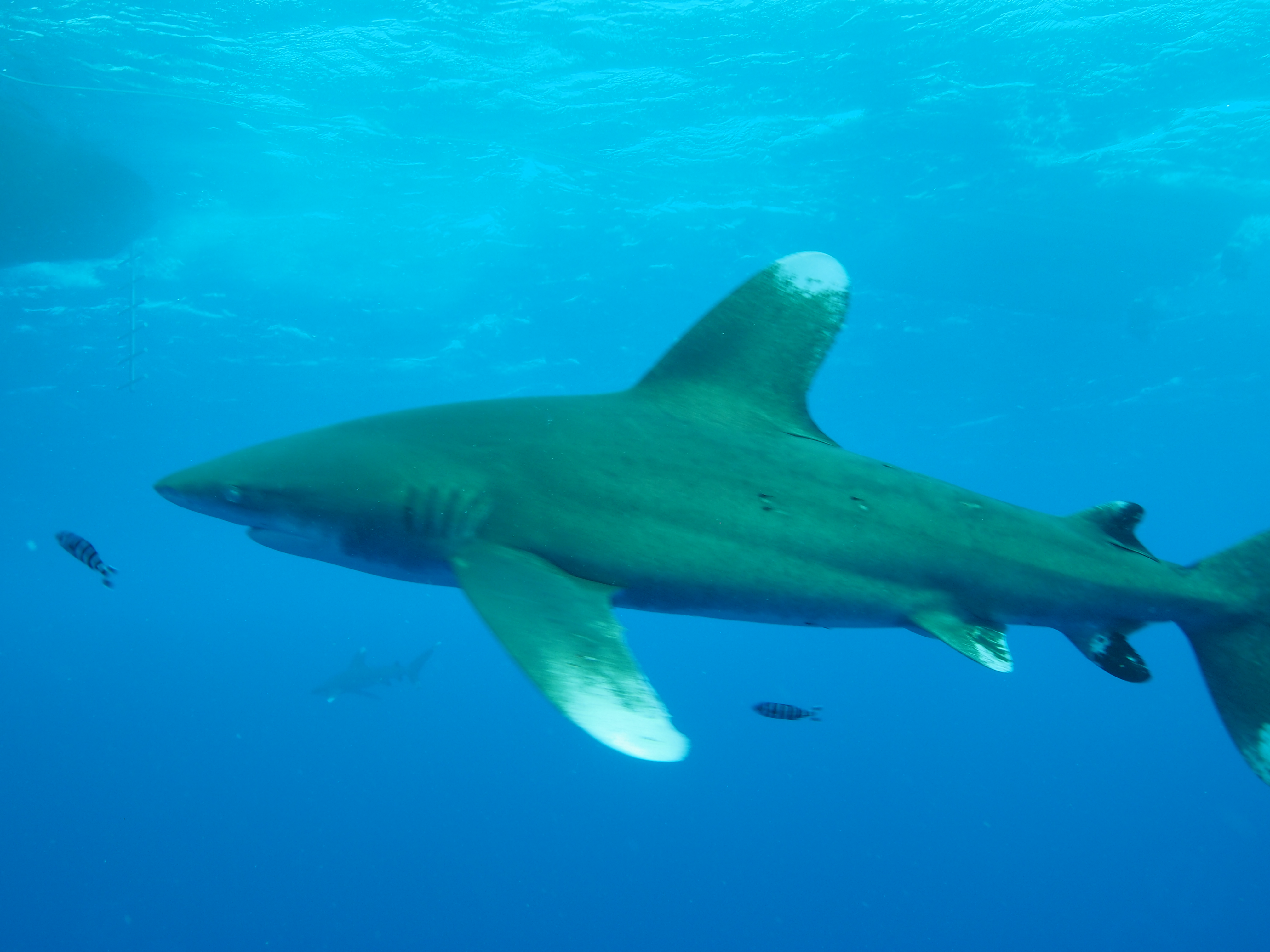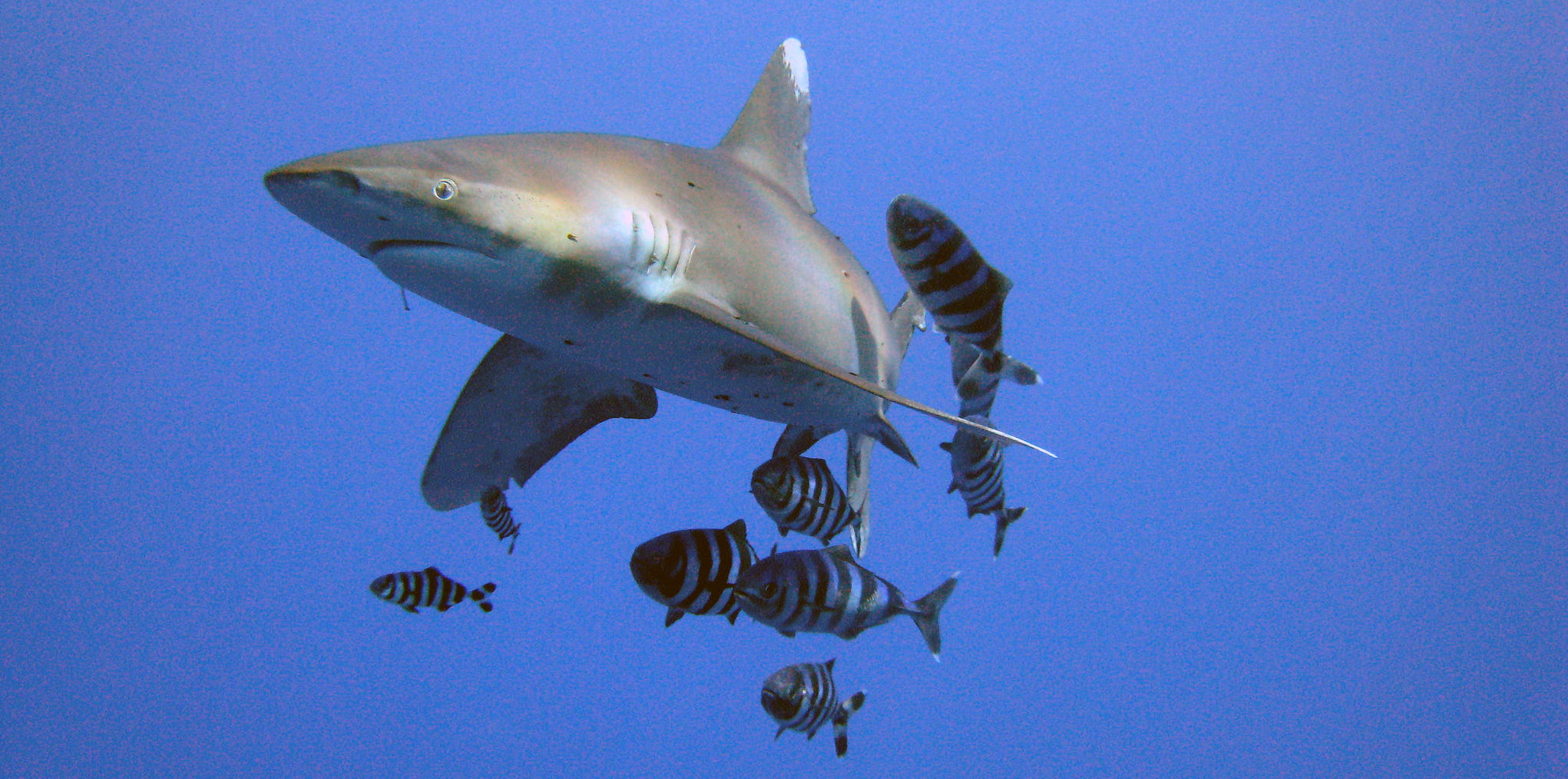King of the open seas, the Oceanic Whitetip Shark was once extremely common and widely distributed in the warmer oceans around the world. This slow-moving and inquisitive shark cruises slowly along the top of the water column looking to spot prey. Now it is on the brink of extinction in large parts of the world.
Latin name Carcharhinus longimanus
Maximum size in cm 395
Colour Mouse-grey, copper tinged white below
Found where All levels, tropical and subtropical waters
Other names White-tipped Shark, Brown Milbert’s Sand Bar Shark, Brown shark, Nigano shark, Oceanic White-tipped Whaler, Silvertip Shark
Status (IUCN) Critically Endangered
Diet Bony fish like threadfins, ancetfish, oarfish, barracuda, jacks, dolphinfish, marlin, tuna, and mackerel, also stingrays, sea turtles, birds, gastropods, crustaceans, and whale carcasses
Tricky colors
Scientists believe that the coloration of Ocean Whitetip Sharks tricks fish into thinking they are a school at night, so they come close enough that they can quickly lunge out and grab them. Oceanic Whitetip Sharks, active both day and night, tend to hunt in the water column around 490 ft (150 m) below the surface, but have been observed at waters as shallow as 120 ft (37 m) and along coastlines.
Fins
This shark is a commercially important species for its fins, meat, and oil. It is eaten fresh, smoked, dried, and salted and its hide is used for leather. Between 1969 and 2003, there has been a 70% decline in their population numbers and that rate keeps growing every year. Between environmental pressures, the brutal practice of shark finning, and a slow reproductive rate, Oceanic Whitetip Sharks are in serious threat of becoming extinct. As a result of these findings, its status on the IUCN Red List was moved to “Critically Endangered” in the Northwest and Western Central Atlantic. Also in other parts of the world this shark is very vulnerable.
Sea Dogs
With its stocky body is most notable for its long, white-tipped, rounded fins, this shark is easy to recognize. Although being a slow swimmer, it can lash out in short bursts of impressive speed and are known to be unpredictable behaviour. Sometimes known as ‘sea dogs’ for their behaviour. When an Oceanic Whitetip Shark finds something interesting, it will approach cautiously and will retreat if it feels threatened. Then like dogs, they will wait for the perfect opportunity to return and sneak attack. They also are known to follow ships the way a dog will follow their master.
Also known for their feeding frenzies, which are actually very methodical and cooperative ways of hunting together in a pack. They really are taking turns striking and sharing food, rather than just violently killing and eating.
‘Most dangerous shark’
French oceanographic researcher Jacques Cousteau called the Oceanic Whitetip Shark “the most dangerous of all sharks” because of its danger to shipwreck or air crash survivors. This species is suspected to be responsible for many fatal shark bites on humans. The most famous example was the US Warcraft USS Indianapolis, which was torpedoed in World War II. Oceanic Whitetip Sharks attacked and potentially killed 800 survivors that were floating in open sea.


